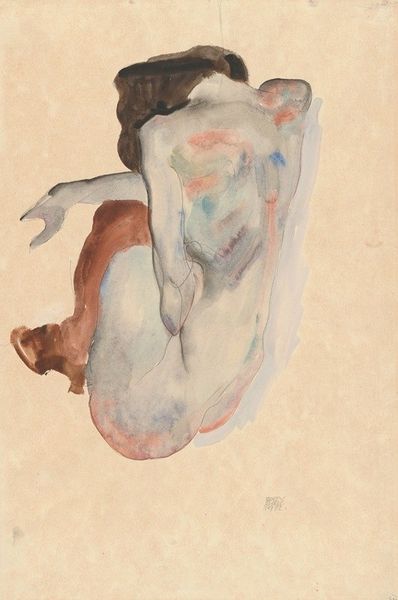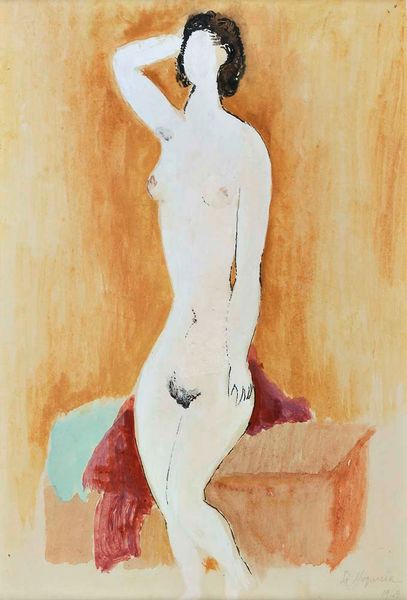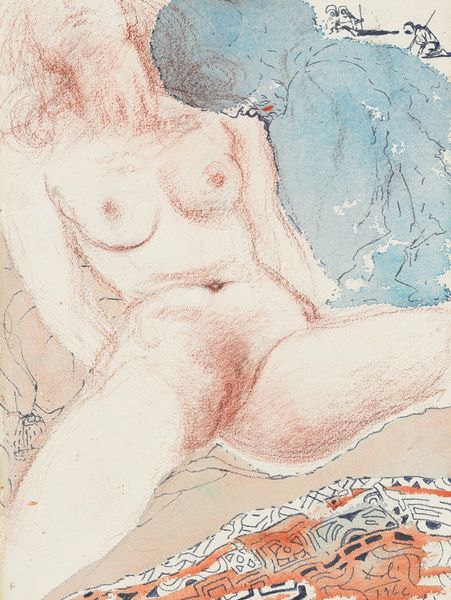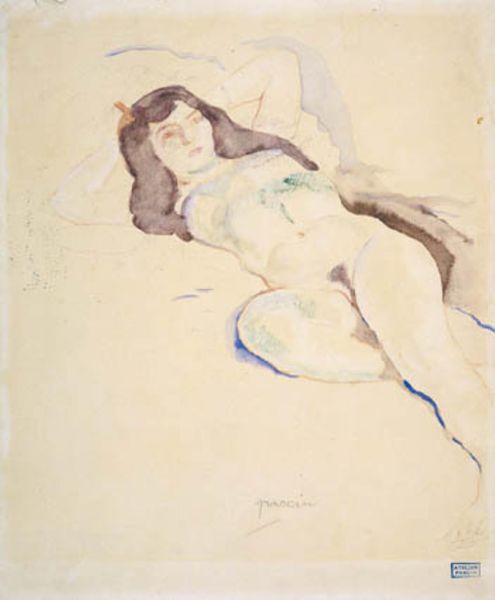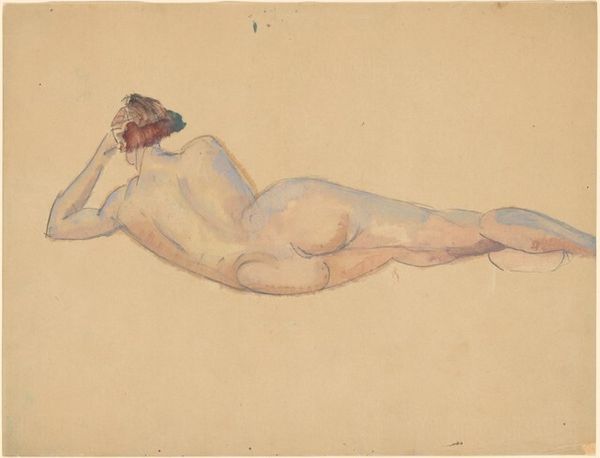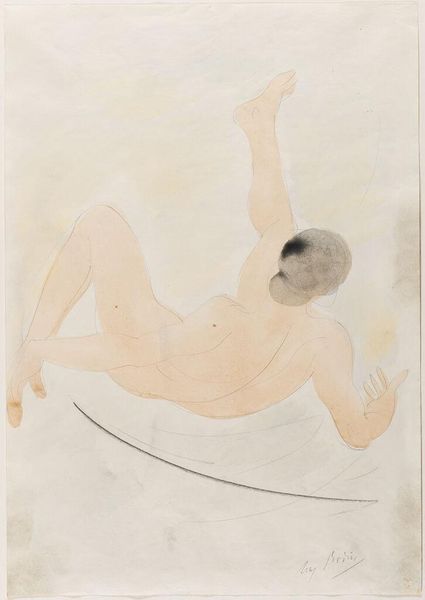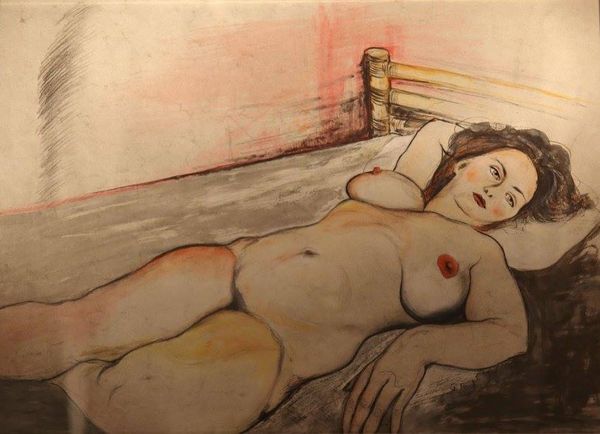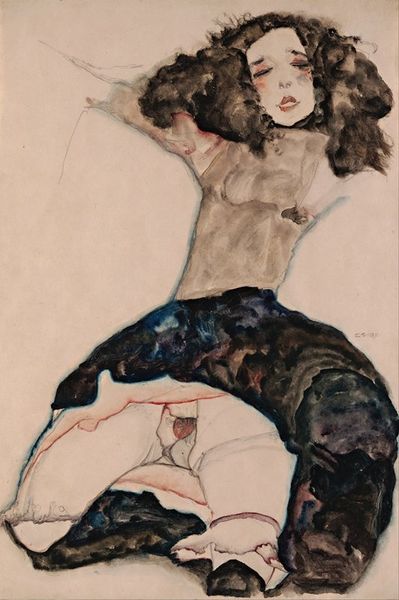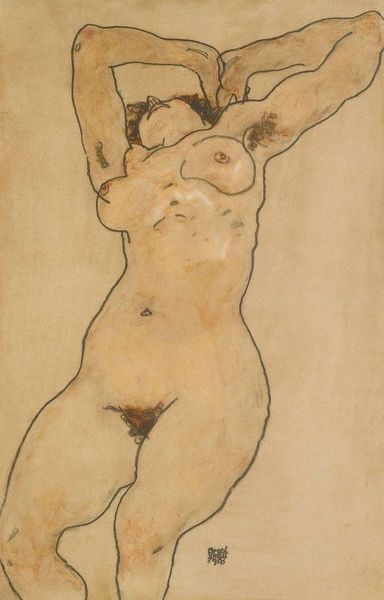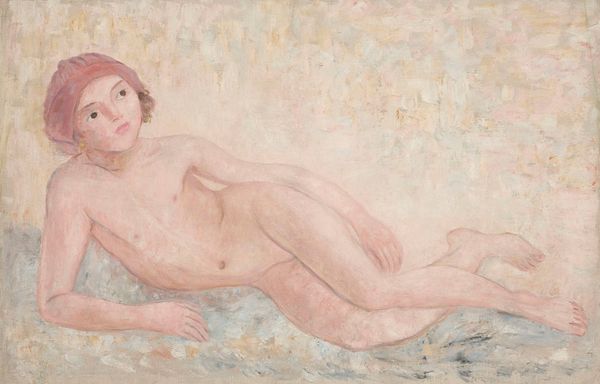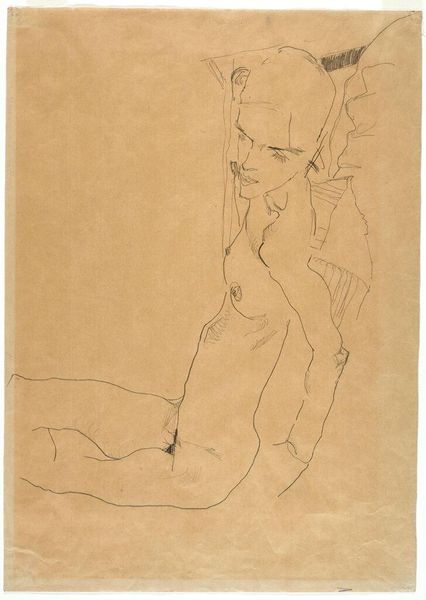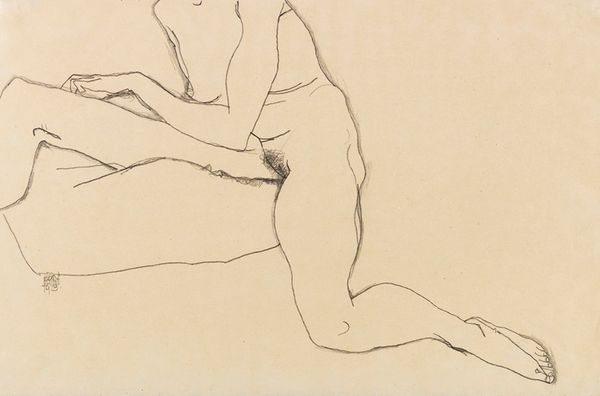
drawing, watercolor
#
drawing
#
figurative
#
self-portrait
#
charcoal drawing
#
figuration
#
watercolor
#
pastel chalk drawing
#
expressionism
#
line
#
watercolour illustration
#
nude
#
watercolor
#
erotic-art
Copyright: Public Domain: Artvee
Editor: So, we're looking at Egon Schiele's "Two Reclining Nudes" from 1911, done in watercolor and charcoal. The way these two figures are intertwined and that direct gaze from the bottom figure makes me a bit uneasy, almost confrontational. How do you interpret this work, especially considering the cultural context of the time? Curator: Well, that uneasy feeling might be precisely what Schiele intended. Remember, Vienna in the early 20th century was grappling with societal shifts and sexual repression, even hypocrisy. Schiele, deeply influenced by Expressionism, used his art to challenge those norms, and critique institutional power structures through visceral portrayals of the human body. Look at the almost clinical detail in their features compared to the amorphous setting. What does that contrast suggest to you about his attitude towards academic art and societal expectation? Editor: It does seem like he’s setting up a dichotomy. The raw figures versus something more conventional… Almost a deliberate rejection. Does the gaze have something to do with that pushback? Curator: Precisely. Think of the traditional role of the nude throughout art history - often passive, idealized, created for the male gaze. Here, Schiele inverts that power dynamic. The figures, especially the one looking directly at the viewer, assert their own agency. The direct, unblinking stare is almost unsettling, because it forces the viewer to confront their own voyeurism, their own expectations about how a nude should behave. This, of course, put him in direct conflict with conservative Viennese society. Editor: I didn't initially think about it like that, but seeing it as a direct commentary on traditional power structures definitely sheds new light on the work. It’s much more than just an erotic artwork, as the tag indicates. Curator: Indeed. It's a calculated provocation, pushing boundaries, questioning the institution of art itself and its complicity with societal norms. By portraying raw, unidealized bodies, he critiques the art establishment's expectations. So, how has your perspective shifted after our discussion? Editor: I'll definitely be less quick to judge an artwork's immediate "mood" and instead ask, what societal norms is it trying to engage with and perhaps critique? Thank you!
Comments
No comments
Be the first to comment and join the conversation on the ultimate creative platform.
